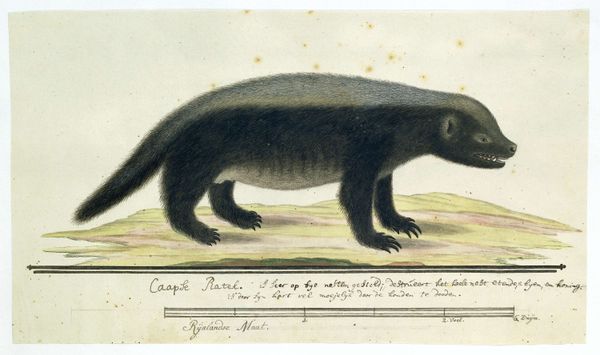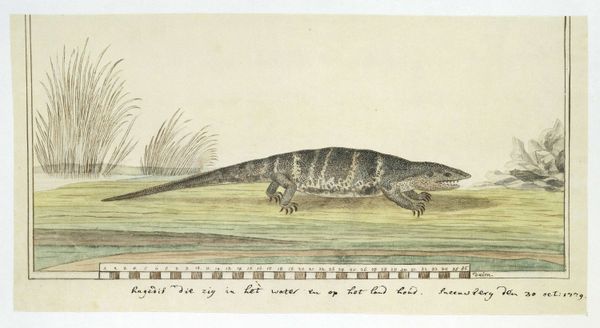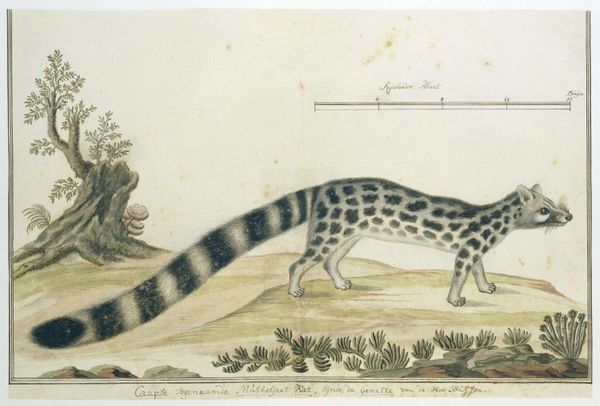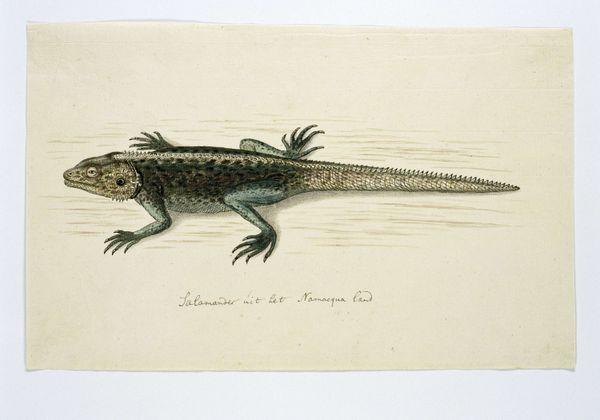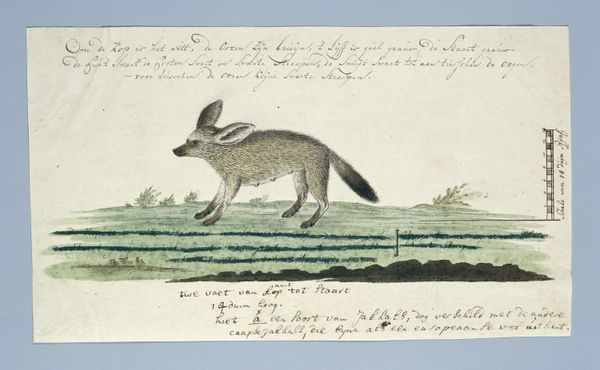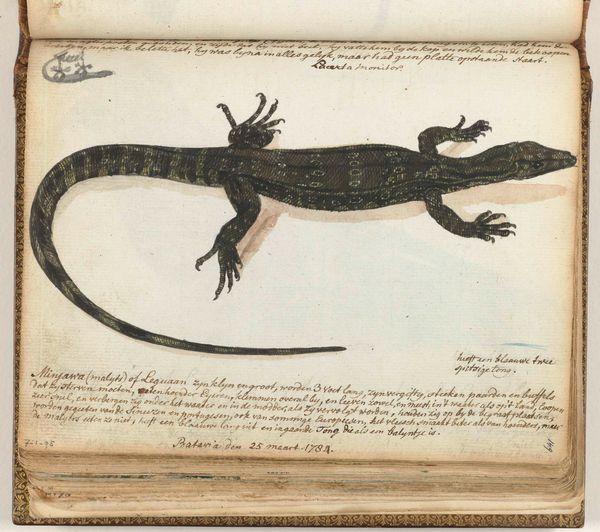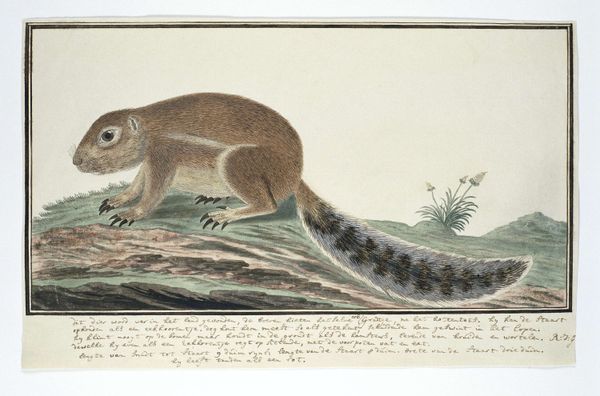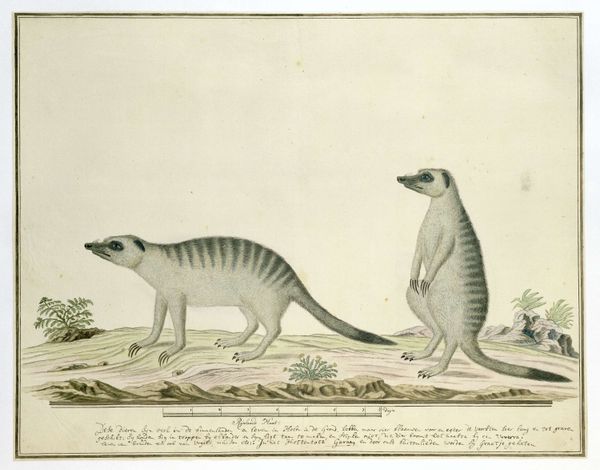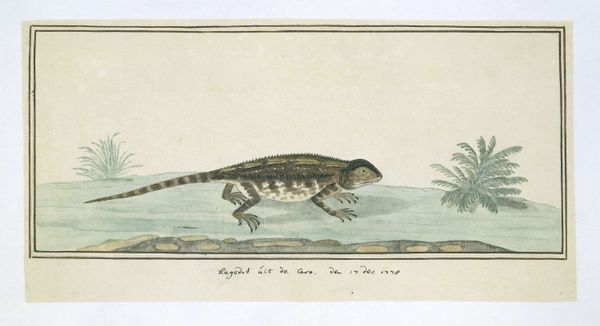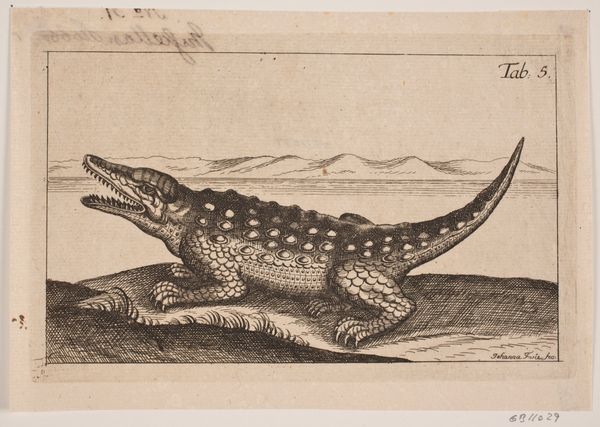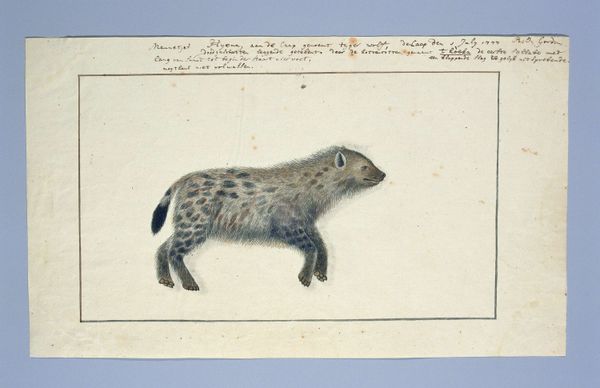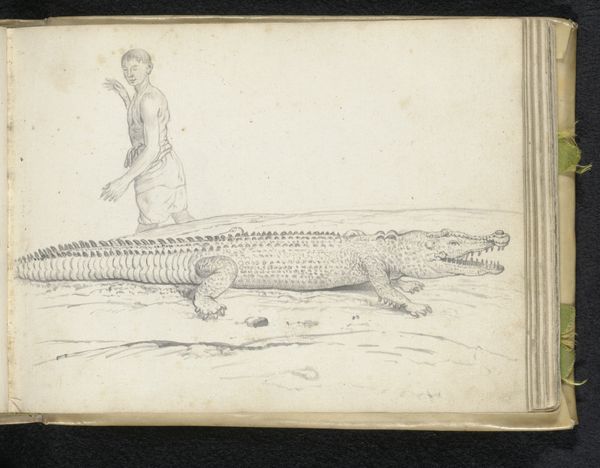
Dimensions: height 660 mm, width 480 mm, height 393 mm, width 601 mm, height mm, width mm
Copyright: Rijks Museum: Open Domain
Curator: It's Robert Jacob Gordon's rendering of an "Icotnyx striatus," a striped polecat, dating from somewhere between 1773 and 1780. Look at how simply, almost diagrammatically, he's captured the essence of the creature. Editor: Immediately, I see something caught between scientific documentation and romantic yearning. The sparseness suggests careful observation, but that very sparseness also seems to suggest vulnerability. Curator: Yes! The Romantic period prized a specific vision of nature, didn't it? One of power, yes, but also of fragility and beauty threatened by encroaching modernity. In a way, this rendering functions as both observation and perhaps... elegy? A symbolic register for something beyond just the animal itself? Editor: The medium contributes, certainly. The delicate watercolor on paper gives the image an ephemeral quality. I'm struck by the bareness of the page itself—it draws attention to the materials used and the process. Almost as if Gordon wants us to remember the work, the act of creation, involved in fixing this animal to the page. The 'realness' of nature made tangible by human work. Curator: I read a visual parallel between the stark whiteness and the animal's stripe--there's something of the balance of power, civilization seeking to understand and claim dominion over nature, echoed even here, at an iconographic level. And yet the stink bunsem seems completely unconcerned by us. Look at the way Gordon outlines it, like a map being traced over a hidden world! Editor: Right, and notice, too, the way it seems to float on the page, devoid of habitat or real context. We can see Gordon considered his process of work to represent his vision of understanding nature and it shows how nature itself is being 'consumed', in visual form at least, by naturalists in the 18th century. Curator: He's reminding us of humanity's position outside the natural world—we’re the observers, always at a distance. Which in itself tells its own story about this particular historical moment in science, doesn't it? Editor: Indeed, there is so much encoded in the presentation; I would love to know if he sketched it in-situ! Thanks for pointing it out.
Comments
No comments
Be the first to comment and join the conversation on the ultimate creative platform.
